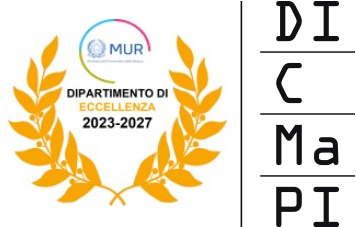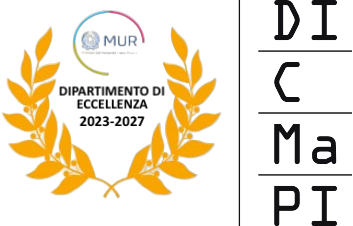Chemical Engineering at the interface Lab

Focus of our research activity is the flow behavior of soft matter with a special emphasis on the role played by interfaces in a chemical engineering perspective. Interfaces are a common feature of soft matter due to the mesoscopic size of its constituents, such as emulsion droplets, surfactant vesicles and living cells, which belong to a range intermediate between the molecular and the macroscopic scales. This size range, coupled with the ensuing slow dynamics, makes soft matter single constituents observable by optical microscopy, thus providing a powerful tool for the direct visualization of microscale phenomena. Our research approach is based on exploiting advanced optical microscopy techniques, such as confocal, epifluorescence, polarized, time-lapse and high-speed imaging, to visualize the behavior of soft matter in different environments and process conditions, including flow cells, diffusion chambers, biological plates, membrane devices and metal surfaces. Optical microscopy combined with image analysis techniques is especially valuable in our efforts to study the rheological and interfacial phenomena affecting the microstructure of soft matter at the level of its single constituents under well-defined flow conditions. The latter include simple shear flow in a sliding parallel plate apparatus and Poiseuille flow in channels of different cross sections. Furthermore, we use microfluidics and lab-on-chip technologies to investigate complex fluids flowing in a network of microchannels. Apart from the advantages of small sample volumes and fast transport processes, our interest in these technologies is motivated by their capability of reproducing the flow geometry of blood microcirculation, which is an example of ante litteram microfluidic systems in vivo.
Some topics of recent research are reported below:
- Development of novel methodologies for measurement of interfacial and rheological properties
- Characterization of rheo-optical behaviour of emulsions, surfactant solutions, and biological fluids (e.g. blood, mucus, semen)
- drug delivery in microcirculation
- Micro-flow reactors
- Transport in porous media
- Membrane processes
- Bacterial Biofilm
- Spheroids and 3D cell models
- Organic Biosensors
- Electrospinning.
From the engineering point of view, the presence of interfaces is at the root of the complex behavior observed in systems of industrial relevance and is related to several properties, such as the interfacial tension, which can be exploited in a range of applications. We have scientific collaborations with several companies concerning topics of industrial interest, such as emulsions, surfactant solutions, blood and microgel systems.
Labs and main equipment available:
RHEO-OPTIC lab
- Time-Lapse videomicroscopy workstation with environmental control and high sensitivity videocamera for epifluorescence observation
- Inverted microscope with high speed camera
- Parallel plate flow cell with upright microscope and videocamera
- Stereomicroscope
- Oxygen Plasma reactor
- Microfluidic Flow and Diffusive chambers
- Protein Electrophoresis with ChemiDoc
- Microfluidic chamber for membrane filtration with pressure, syringe and peristaltic pumpss.
- Programmable Multimeter and probe station
- Chimical hood
MICROSCOPY lab
- Confocal Microscope
- Biological Hood
- Cell cultures incubator
- Inverted microscope for epifluorescence
- Routine inverted microscope
- Ussing chamber
Main Pubblications:
R. D’Apolito, G. Tomaiuolo, F. Taraballi, S. Minardi, D. Kirui, X. Liu, A. Cevenini, R. Palomba, M. Ferrari, F. Salvatore, E. Tasciotti, S. Guido, “Red blood cells affect the margination of microparticles in synthetic microcapillaries and intravital microcirculation as a function of their size and shape”, J. Control. Release, 217, 263-72 (2015)
P. Posocco, A. Perazzo, V. Preziosi, E. Laurini, S. Pricl and S. Guido, “Interfacial tension of oil/water emulsions with mixed non-ionic surfactants: Comparison between experiments and molecular simulations”, RSC Advances, 6, 4723-4729 (2016)
V. Preziosi, M. Barra, A. Perazzo, G. Tarabella, A. Romeo, S. L. Marasso, P. D’Angelo, S. Iannotta, A. Cassinese and S. Guido, “Monitoring emulsion microstructure by using organic electrochemical transistors”, J. Mater. Chem. C, 5 (8), 2056-2065 (2017)
L. Sicignano, G. Tomaiuolo, A. Perazzo, S. P. Nolan, P. L. Maffettone, S. Guido, “The effect of shear flow on microreactor clogging”, Chemical Engineering Journal, 341, 639-647 (2018)
F. De Vita, M.E. Rosti, S. Caserta, L. Brandt Numerical Simulations of Vorticity Banding of Emulsions in Shear Flows, Soft Matter 2020
- A. Capaccio, S. Caserta, S. Guido, G. Rusciano, A. Sasso, “Dissolution of a surfactant-water lamellar phase investigated by combining time-lapse polarized light microscopy and confocal Raman spectroscopy”, J. Colloid Interface Sci., 561, 136-146 (2020)
F. Recupido, G. Toscano, R. Tatè, M. Petala, S. Caserta, T. D. Karapantsios, S. Guido, “The role of flow in bacterial biofilm morphology and wetting properties”, Colloids Surf. B, 192, 111047 (2020)
R. Graziano, V. Preziosi, D. Uva, G. Tomaiuolo, B. Mohebbi, J Claussen, S. Guido “The microstructure of Carbopol in water under static and flow conditions and its effect on the yield stress” Journal of Colloid and Interface Science 582, 1067 – 1074 (2021)
V. Preziosi, M. Barra, G. Tomaiuolo, P. D’Angelo, S. L. Marasso, A. Verna, M. Cocuzza, A. Cassinese, S. Guido, “Organic electrochemical transistors as novel biosensing platforms to study the electrical response of whole blood and plasma”, 2022 Journal of Materials Chemistry B, 10, 87-95
R. Ferraro, F. Ascione, P. Dogra, V. Cristini, S. Guido, S. Caserta: “Diffusion-induced anisotropic cancer invasion: a novel experimental method based on tumour spheroids” AIChE Journal 2022
Main research projects funded:
- 2013-2016, “Delivery systems for the Nucleic Acid Based Drugs”, MIUR, Responsabile unità locale: Stefano Guido
- 2019-2022 “Biofilms from an interdisciplinary perspective”, ESA Topical Team, European Space Agency, coordinatore europeo: Sergio Caserta.
- 2019 – 2021 “Biosensing through Immuno-microfluidics”, STAR 2019, Principal investigator: Valentina Preziosi.
- 2020-2022 “Rilevamento ed amplificazione della presenza di immunoglobuline in sangue affetto da COVID-19 con l’uso di biosensori”, FISR 2020, Principal Investigator: Valentina Preziosi.
- 2021-2023 “ROTOR: Ruolo delle condizioni ambientali sulla motilità batterica e sulla formazione di biofilm”, FRA 2020, Principal Investigator: Sergio Caserta.
- 2022-2024 “Role of gravity and shear stress on bacterial motility and biofilm morphology”, OSIP 2021, European Space Agency, Principal Investigator: Sergio Caserta.
- 2019-2021 “Cervical mucus viscoelasticity as a quantitative marker of fertility”, PON 2014-2020, MIUR, Responsabile scientifico: Stefano Guido.
- 2017-2019“A microfluidic based organ-on-chip platform to test the flow-enhancement effect on Injectable drug carriers transport efficiency”, Programma per il Finanziamento della Ricerca di Ateneo (DR 3450-2016). Responsabile scientifico: Giovanna Tomaiuolo.
- 2022-2025 European Erasmus project “SpaceEdu”. Responsabili scientifici: Sergio Caserta e Stefano Guido
Partnership:
- CEINGE
- Procter&Gamble
Settore/i ERC (European Research Cuncil):
- PE8
Product design, process design and control, construction methods, civil engineering, energy processes, material engineering
Key-words
Flow
Soft Matter
Biological fluids
Interfaces
Microscopy
Image Analysis
Microfluidics
Rheology
Transport Phenomena
Thermodynamics
Sensors
Membrane processes


